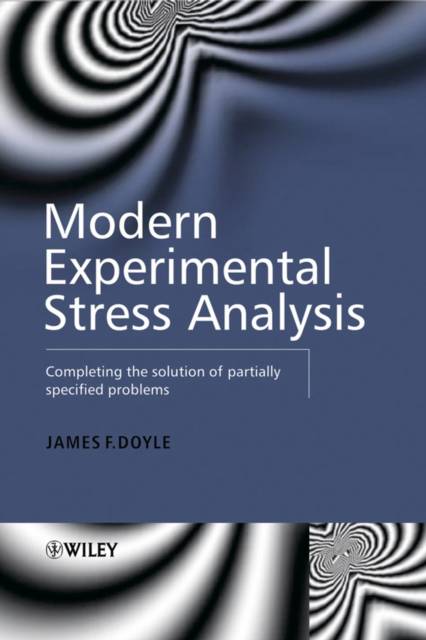
- Retrait gratuit dans votre magasin Club
- 7.000.000 titres dans notre catalogue
- Payer en toute sécurité
- Toujours un magasin près de chez vous
- Retrait gratuit dans votre magasin Club
- 7.000.0000 titres dans notre catalogue
- Payer en toute sécurité
- Toujours un magasin près de chez vous
Modern Experimental Stress Analysis
Completing the Solution of Partially Specified Problems
James F DoyleDescription
There are two main types of stress analyses - the first is conceptual where the structure does not yet exist and the analyst has more freedom to define geometry, materials, loads etc - generally such analysis is undertaken using numerical methods such as the finite element method. The second is where the structure (or a prototype) exists, and so some parameters are known. Others though, such as wind loading or environmental conditions will not be completely known and yet may profoundly affect the structure. These problems are generally handled by an ad hoc combination of experimental and analytical methods.
This book therefore tackles one of the most common challenges facing engineers - how to solve a stress analysis problem when all of the required information is not available. Its central concern is to establish formal methods for including measurements as part of the complete analysis of such problems by presenting a new approach to the processing of experimental data and thus to experimentation itself. In addition, engineers using finite element methods will be able to extend the range of problems they can solve (and thereby the range of applications they can address) using the methods developed here.
Modern Experimental Stress Analysis
- Presents a comprehensive and modern reformulation of the approach to processing experimental data
- Offers a large collection of problems ranging from static to dynamic, linear to non-linear
- Covers stress analysis with the finite element method
- Includes a wealth of documented experimental examples
- Provides new ideas for researchers in computational mechanics
Spécifications
Parties prenantes
- Auteur(s) :
- Editeur:
Contenu
- Nombre de pages :
- 440
- Langue:
- Anglais
Caractéristiques
- EAN:
- 9780470861561
- Date de parution :
- 12-03-04
- Format:
- Livre relié
- Format numérique:
- Genaaid
- Dimensions :
- 169 mm x 253 mm
- Poids :
- 961 g

Les avis
Nous publions uniquement les avis qui respectent les conditions requises. Consultez nos conditions pour les avis.






